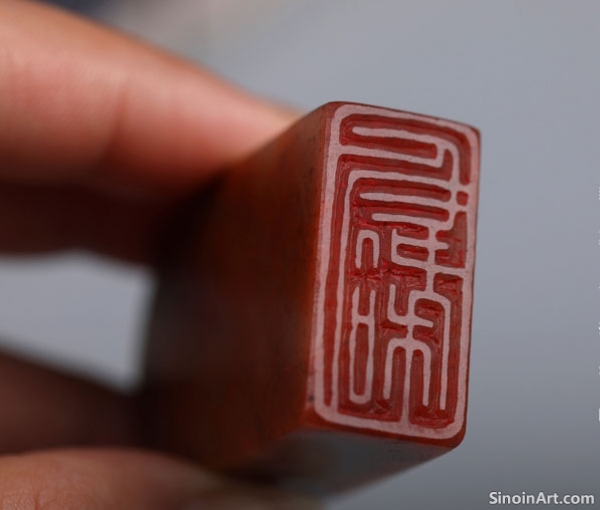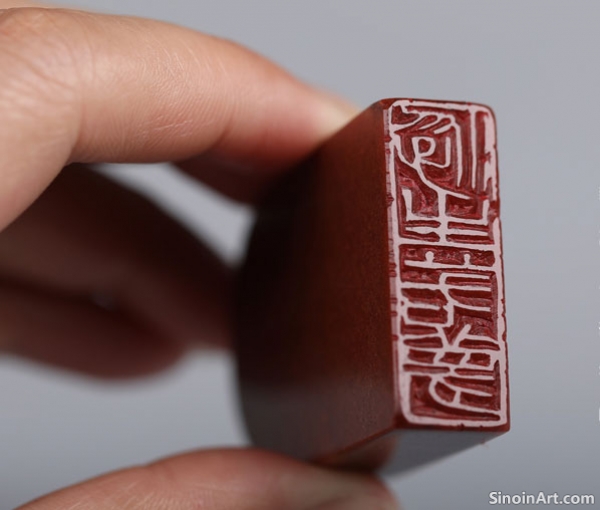Seal Scripts: Decoding the Calligraphy of Name Seals
|
The heart of a name seal lies not only in its material and carving but also in the script style of the characters it bears. Seal script (zhuànshū), the most traditional and widely used script for seals, is an ancient form of Chinese calligraphy, characterized by its rounded lines, symmetrical balance, and archaic aesthetic. Understanding the different variations of seal script is essential to appreciating the artistic and historical context of a name seal.  There are two primary variations of seal script: Greater Seal Script (dàzhuàn) and Lesser Seal Script (xiǎozhuàn). Greater Seal Script, used primarily before the Qin Dynasty, is a more ancient and complex form, with variations reflecting regional styles. Lesser Seal Script, standardized during the Qin Dynasty, is more uniform and legible, often characterized by its consistent line weight and balanced composition. The choice between Greater and Lesser Seal Script often reflects personal taste, or the historical period from which the artisan derives their inspiration.  Beyond the major variations, many calligraphers and seal carvers have developed their own unique interpretations of seal script. These interpretations may involve slight modifications to the strokes, spatial arrangements, or overall aesthetic of the characters. The artistry of the seal lies not only in the carving technique but also in the individual calligrapher’s ability to translate a script into a distinctive and personal artistic expression. This interpretation of the scripts is the key to the individual nature of the carved seals.  The choice of seal script is not arbitrary; it is often guided by the seal’s intended use and the aesthetic preferences of its owner. Seal script is valued not only for its legibility and practicality but also for its artistic beauty and historical gravitas. The use of seal script connects the modern individual to a rich cultural heritage, demonstrating the timeless appeal of this ancient form of writing. The mastery of seal script is a demanding art that requires years of dedicated practice. Seal carvers must not only be skilled in carving techniques but also have a deep understanding of calligraphy, composition, and Chinese history. Understanding how various script styles add meaning and value to a carved seal, and mastering the techniques to produce the various script styles, is a central part of the art. |
Tag : Seal Script, Zhuanshu Calligraphy, Chinese Seal Fonts, Seal Engraving, Seal Lettering
Related information
- Famous Collectors and Their Seal Collections: A Legacy of Connoisseurship
- The Historical Evolution of Collector's Seals: From Early Marks to Art Historical Records
- The Cultural Significance of Chinese Seals: More Than a Signature
- Famous Seal Carvers and Their Legacy: Masters of Zhuanke
- The Tools of the Trade: Essential Equipment for Seal Carving
This article highlights the collections of famous Chinese art collectors throughout history and their use of collector's seals, exploring the impact of their patronage and connoisseurship on the art world.
This article traces the historical development of collector's seals in China, from their early origins to their current status as important art historical records and markers of cultural heritage.
Discover the cultural significance of Chinese seals, which extend far beyond simple signatures. Explore their historical uses, their role in art, and their symbolism within Chinese culture.
This article highlights some of the most influential seal carvers in Chinese history, discussing their distinctive styles, techniques, and the lasting impact they had on the art of zhuanke.
This article outlines the essential tools used by seal carvers, from the selection of chisels to the preparation of stone, explaining their specific functions and how they contribute to the finished product.